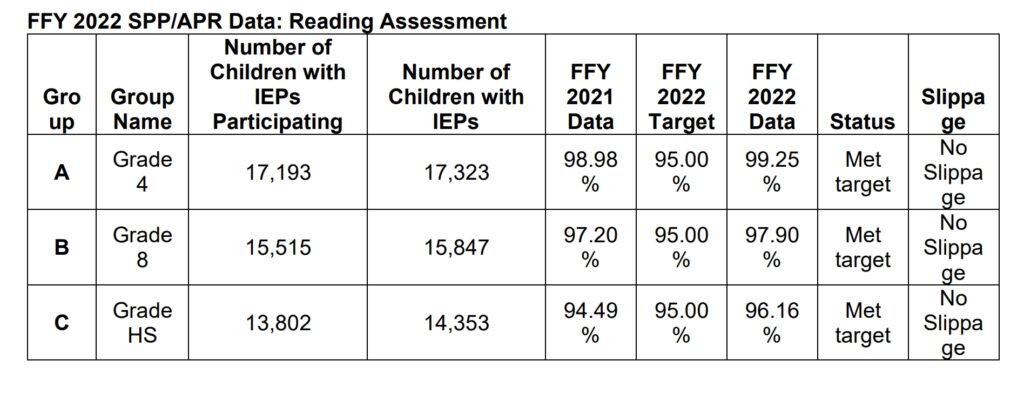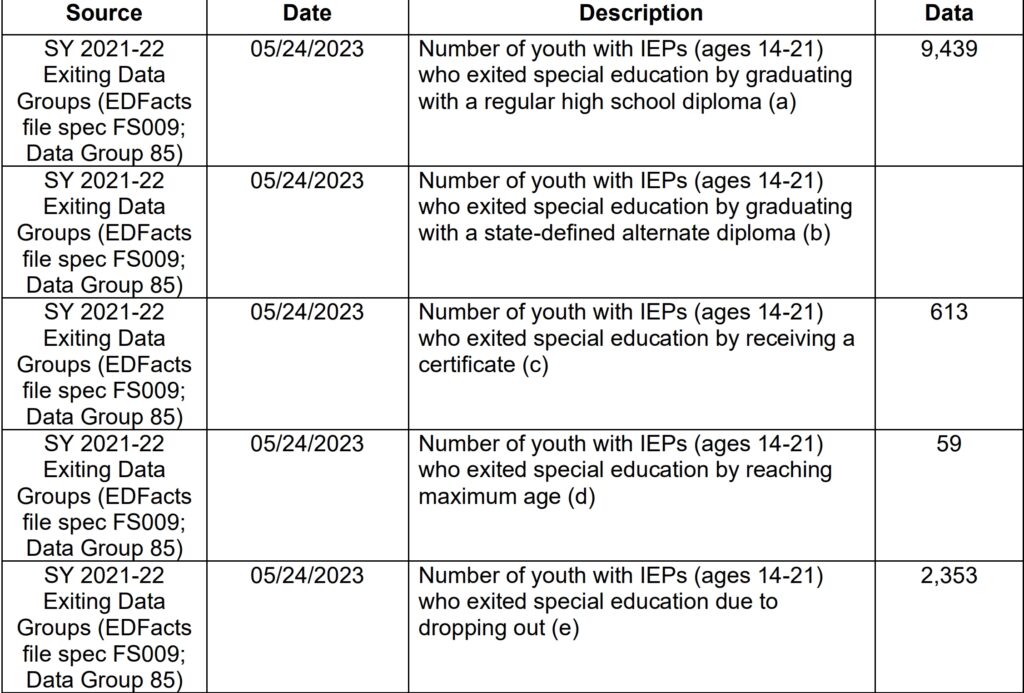New report outlines improvement plans for special education in North Carolina
September 9, 2024

North Carolina has been identified as a state that needs assistance with special education programs, according to data that was presented at the most recent State Board of Education meeting.
In a report to the General Assembly, the Office of Exceptional Children (OEC) at the N.C. Department of Public Instruction provided data on the performance of students with learning differences and steps the office plans to take toward improvement. The report looks at data from the 2022-23 school year.
While grade-level proficiency for students increased based on data from statewide tests, OEC Senior Director Carol Ann Hudgens said changes are needed.
“While this is an improvement post-pandemic — and a credit to exceptional educators statewide — the rate of improvement remains of concern,” Hudgens said. “Therefore, improvement strategies or activities must either be expanded or changed in favor of ensuring all resources are aligned with programmatic priorities.”
Sign up for the EdWeekly, a Friday roundup of the most important education news of the week.
Performance data
Proficiency rates were included in the report for students with Individual Education Plans (IEPs) — documents that outline progress goals for students with learning differences while they are enrolled in special education programs. The scores were reported for those following regular and alternative academic achievement standards.
The report also measured testing participation. Testing participation in this instance is the proportion of students with IEPs that took a standardized test compared to the total number of students who are enrolled in a special education program.


In the 2022-23 school year, 98% of students with IEPs took reading and math exams. This includes data for students in grades fourth and eighth as well as high schoolers.
Some students with disabilities required accommodations for standardized testing. For the subject of reading, this data was reported for grades third through eighth and grade 10. Of these students, 63% took a reading exam with accommodations. For math, data was given for grades third through eighth and grade 11. For these students, 70% had math exam accommodations, according to the report.
For students with learning differences as a whole, 19% were reported as grade-level proficient in 2023.

Learning environments
The state keeps record of the different educational environments that students with IEPs are placed in. According to the report, there are three scenarios measured for students in kindergarten through the age of 21:
- Being in a regular classroom 80% of the day or more
- Being in a regular classroom 40% or less of the day
- And those attending separate schools, residential facilities, or being homebound or in hospital placements.
As of August 2023, most students are in regular classrooms for 80% of the day.
Preschool environments had similar results. This environment, according to the report, accounts for children ages three to five. Slightly more students were in regular classrooms or in separate special education classes and facilities compared to the previous year.
Graduation
All students in North Carolina need 22 credits to graduate from high school, based on the Future-Ready Course of Study.
Students with learning differences may be eligible for an Occupational Course of Study program (OCS). They have to be specifically identified for it and earn the same amount of credits as other high school students, but it has adapted course requirements. Those following OCS graduate with a standard high school diploma.
“The Office of Exceptional Children continues its collaboration with the NDPI Office of Academic Standards to ensure that students with significant cognitive disabilities have access to the Future Ready Course of Study as evidenced by its contributions to the revisions of the Extended Content Standards for Science and English Language Arts,” the report said.
The report provided a percentage of people who graduated with a high school diploma compared to other people that exited high school with IEPs, including alternative degrees, certificates, and dropouts. About 76% of students exited high school in the 2022-23 school year with standard degrees, below the target of 79.52% from DPI. The report cites the transition back to in-person learning after the COVID-19 pandemic as a cause for the lower numbers.

According to the report, the percentage of dropouts that were reported are a result of comparing students aged 14-21 who exited special education from dropping out, to the total number of those who exited altogether, with the exception of transferring. About 19% of students with IEPs exited special education by dropping out.
Transitions
Families put plans in place for students when they transition in and out of each phase of their education.
According to the report, most infants and toddlers receiving services for disabilities or developmental delays had an IEP developed and implemented by their third birthday. For those who did not, nine out of 10 the holdovers because they needed to complete meetings, evaluations, enrollment, and to arrange transportation. No parents opted to continue early intervention services beyond age three.
Transition services look different for students leaving high school. Students over the age of 16 with IEPs can establish postsecondary goals after they are given a transition assessment and courses of study to help assist them. The student is also invited to IEP meetings along with outside agencies that may be involved in sponsoring their future plans. Only 60% of students sampled in special education in that age range had been through those steps, missing North Carolina’s 100% target for this area in 2022.

Steps toward improvement
The United States Department of Education’s Office of Special Education Programs uses four determination levels to evaluate each state and U.S. territory: meets requirements, needs assistance, needs intervention, and needs substantial intervention for data collected during the 2022-23 school year. According to the report, North Carolina was one of the 38 states that was determined to need assistance.
In a presentation to the State Board of Education last week, Hudgens outlined improvements the state could make to special education departments.
One solution, to alleviate the teacher shortage, Hudgens said they were trying to create early networking opportunities for those interested in teaching special education. She also said they are starting an Exceptional Children (EC) mentorship program.
“It is our hope that these early networking experiences convey the support available to our future talent and assist our local EC administrators with filling vacancies. If this is successful, we plan to repeat the event at our spring EC Administrators Conference,” Hudgens said.
Hudgens said they also plan to use federal funds differently for targeted technical assistance programs and provide more professional development for EC educators.
“OSEP appreciates North Carolina’s efforts to improve results for children and youth with disabilities and looks forward to working with North Carolina over the next year as we continue our important work of improving the lives of children with disabilities and their families,” Valerie Williams, director for the Office of Special Education Programs, said in a letter to DPI.